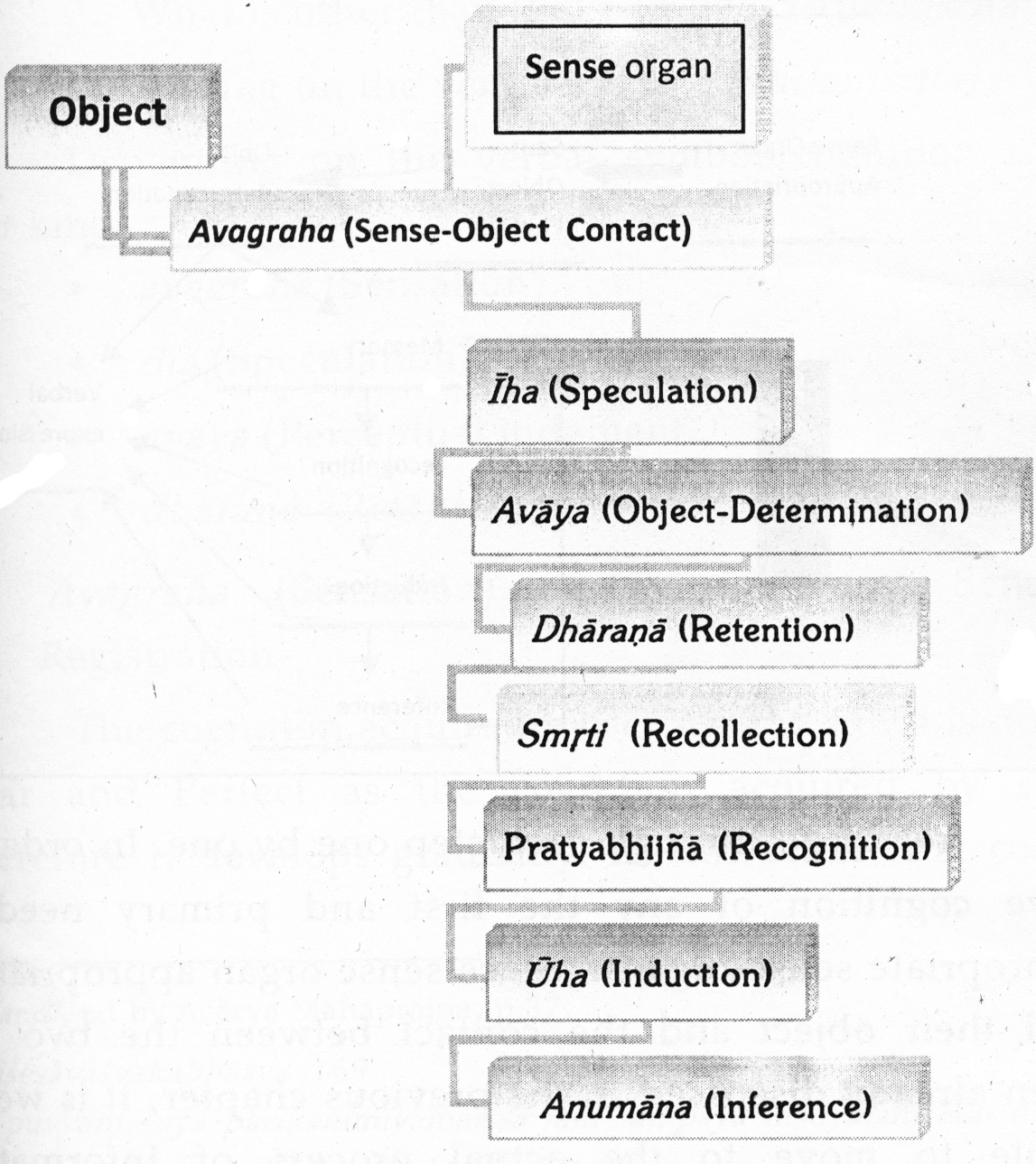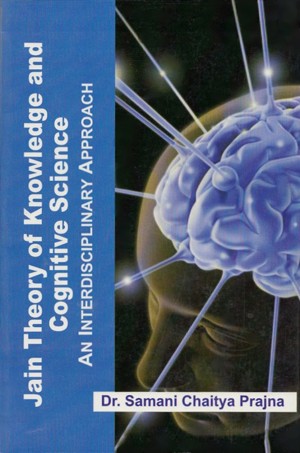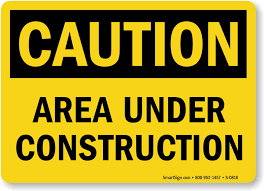3.2 Jain Model of Information Processing
Fig. No. 3.3-A Jain Model of Information Processing

The process of information processing consists of the whole process right from sense object contact to complex inference with its various steps. Each step is necessarily preceded by the previous step but not necessarily be followed by the next. Each of these steps can be studied in detail as follows:
Fig. No. 3.3-B Jain Model of Information Processing

Let us go through each step one by one. In order to have cognition of any the first and primary need is appropriate sense organs. Since sense organ appropriation and their object and the contact between the two has been already discussed in the previous chapter, it is worthwhile to move to the actual process of Information processing.
Process of Information Processing
The process of information processing can well studied by a clear understanding of the divisions and subdivisions of perceptual cognition:[14]
Mainly two divisions of perceptual cognition have been described:
- Depending on the verbal symbol is called śrutaniśrita.
- What is other than that is called aśrutanisrita[15]
Depending on the verbal symbol (śrutaniśrita):
Depending on the verbal symbol cognition is of four kinds:
- avagraha (Sensation)
- Īhā (Speculation)
- avāya (Perceptual judgment)
- dharana (Retention)[16]
 Samani Chaitya Pragya
Samani Chaitya Pragya

